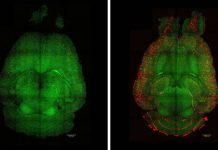Here, Open Access Government explore how the National Eye Institute in the U.S. is supporting vision research that encompasses visual impairment diseases of people of all ages
The National Eye Institute (NEI) was established on the August 2nd, 1968. The U.S. Congress passed Public Law 90-489, which authorised the formation of the institution. It was President Lyndon B. Johnson, who signed the legislation on the 26th December of the same year, at which moment the NEI began to function. The NEI has supported research into vision consistently, through around 1600 research grants and conducting their own research that encompasses the visual impairment diseases of people of all ages.
Currently, Dr Paul A. Sieving is the NEI Director. During his time, he has established a programme to develop treatments for eye diseases, the NEI Audacious Goals Initiative (AGI) for Regenerative Medicine – this research focuses on how to restore the function of critical nerve cells in the eye and visual processing system. Dr Sieving particularly focused on these systems after they are damaged by disease, searching for strategic ways to reverse vision loss in age-related macular degeneration and glaucoma.
What are three of the NEI research outputs?
1. Zebrafish can regenerate from blindness
An NEI study in 2017 examined how decreases in neurotransmitter GABA trigger stem cell production in the retina, which used blind zebrafish to attempt a reversing of the injury. They explored regeneration in the zebrafish retina, which happens naturally. Meanwhile, in humans, the same injury seems irreversibly damaging. The scientists found that GABA could be the influential factor in the regenerating process. This finding translated to human eyes could prove to be substantially useful.
2. Children can survive epilepsy surgery with full vision
Recently, in June 2019, an NEI-funded study explored the impact of brain surgery to halt seizures. The procedure is infamously risky, with the understanding that visual perception could be significantly impaired. A new report from Carnegie Mellon University in the US presented a study of children who had undergone the surgery, which then revealed that the lasting effect on visual perception could actually be imperceptible – even when the children had tissue in their visual centres taken away.
3. Nitisinone increases melanin in people with albinism
A clinical study in February 2019 happened at the NEI itself, to suggest that the drug Nitisinone increases melanin production for some individuals who have oculocutaneous albinism type 1B (OCA-1B), which causes pale skin, hair and poor vision. A Melanin increase could significantly protect people with this condition against the UV rays of the sun. The scientists found a darkening skin and hair but are hoping to pursue a darkening of the imagining of the iris, over time. This could change the lives of people who currently have no cure.
The last word goes to Paul A. Sieving, Director of the National Eye Institute, who comments on the possibilities of NEI:
“This is a remarkable time of discovery. We can view the functioning eye in greater and greater detail and gain a better understanding of the biology, at the level of cells, genes and proteins, that makes vision possible—and how things can go wrong with disease or trauma.” (1)
References:
1.) https://nei.nih.gov/sites/default/files/pdfs/NEI_Anniversary_History_Book.pdf
Open Access Government
editorial@openaccessgovernment.org
www.openaccessgovernment.org
https://twitter.com/OpenAccessGov








